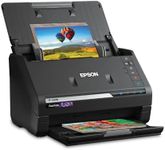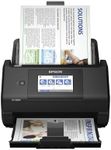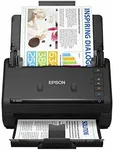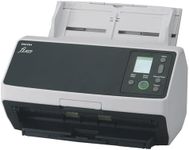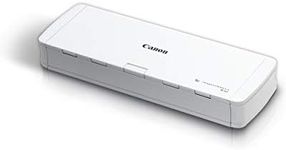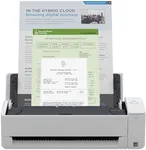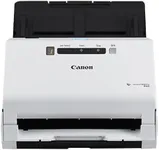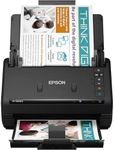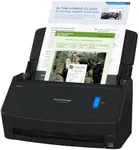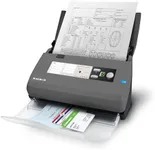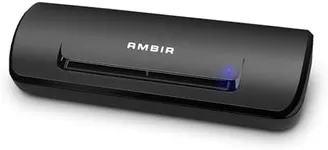Buying Guide for the Best Document Scanner Feeder
When choosing a document scanner with a feeder, it's important to consider your specific needs and how you plan to use the scanner. Document scanners with feeders are ideal for handling large volumes of documents quickly and efficiently. They are commonly used in offices, businesses, and by individuals who need to digitize a lot of paperwork. Understanding the key specifications will help you select the best scanner for your requirements.Scanning SpeedScanning speed is measured in pages per minute (PPM) or images per minute (IPM). This spec is important because it determines how quickly you can digitize your documents. If you have a high volume of documents to scan regularly, a higher scanning speed will save you time. Scanners with speeds of 20-30 PPM are suitable for moderate use, while speeds of 40-60 PPM or higher are better for heavy use. Consider your typical workload to choose the right speed for you.
Automatic Document Feeder (ADF) CapacityThe ADF capacity indicates how many sheets the feeder can hold at once. This is important for efficiency, as a higher capacity means you can load more documents at a time without needing to refill the feeder frequently. For light use, an ADF capacity of 20-50 sheets may be sufficient. For more intensive use, look for capacities of 100 sheets or more. Think about the size of your typical scanning jobs to determine the best capacity for your needs.
ResolutionResolution is measured in dots per inch (DPI) and affects the clarity and detail of the scanned images. Higher resolution is important if you need to capture fine details, such as in photographs or detailed graphics. For general document scanning, 300 DPI is usually adequate. For higher quality scans, such as for archiving important documents or images, 600 DPI or higher may be necessary. Consider the type of documents you will be scanning to choose the appropriate resolution.
Duplex ScanningDuplex scanning means the scanner can scan both sides of a document simultaneously. This feature is important for efficiency, especially if you frequently scan double-sided documents. It can significantly reduce the time and effort required to scan large batches of documents. If you often deal with double-sided paperwork, a scanner with duplex scanning capability is highly recommended. If most of your documents are single-sided, this feature may be less critical.
Connectivity OptionsConnectivity options determine how the scanner connects to your computer or network. Common options include USB, Wi-Fi, and Ethernet. USB is standard and reliable for direct connections to a single computer. Wi-Fi allows for wireless scanning and is useful if you need to share the scanner among multiple devices. Ethernet is ideal for office environments where the scanner needs to be accessible to multiple users on a network. Consider your setup and how you plan to use the scanner to choose the best connectivity option.
Software and CompatibilityThe software that comes with the scanner and its compatibility with your operating system are important for ease of use and functionality. Good software can enhance your scanning experience with features like OCR (optical character recognition), which converts scanned text into editable text. Ensure the scanner is compatible with your computer's operating system and check for any additional software features that may be beneficial for your needs. Think about what you need the scanner to do beyond just capturing images to choose the right software and compatibility.
